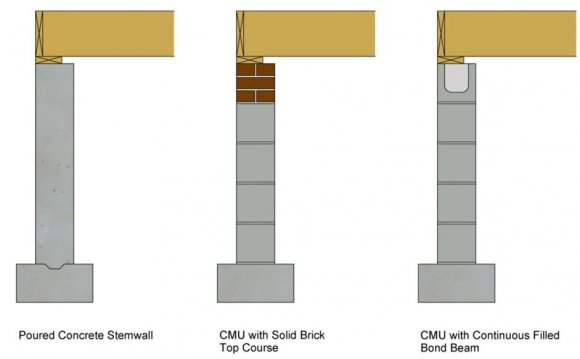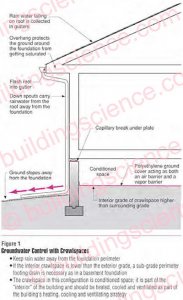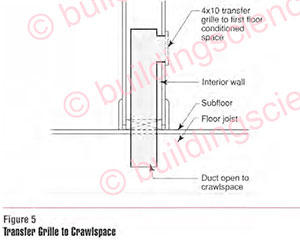

Background
Crawl space venting is generally viewed as good practice despite the obvious moisture problems that occur when outside air with a dew point higher than interior crawl space surface temperature is permitted to enter a crawl space. Unvented, conditioned crawl spaces with insulation on the perimeter solve this problem. Unvented, conditioned crawl spaces with insulation on the perimeter perform better in terms of safety and health (pest control), comfort (warm floors, uniform temperatures), durability (moisture) and energy consumption than passively vented crawl spaces with sub floor insulation.
Perimeter insulation rather than floor insulation performs better in all climates from an energy conservation perspective. The crawl space temperatures, dew points and relative humidities track that of the house. Crawl spaces insulated on the perimeter are warmer and drier than crawl spaces insulated between the crawl space and the house. Cold surfaces that can condense water are minimized when crawl spaces are conditioned.
Wintertime ventilation makes crawl spaces colder and increases the heat loss from the home – venting crawl spaces wastes energy, and can lead to freezing pipes and uncomfortable floors.
Crawl spaces should be designed and constructed as mini-basements, part of the house – within the conditioned space. They should be insulated on their perimeters and should have a continuous sealed ground cover such as taped polyethylene. They should have perimeter drainage just like a basement when the crawl space ground level is below the ground level of the surrounding grade.
 Constructing Conditioned Crawl Spaces
Constructing Conditioned Crawl Spaces
Crawl spaces should be designed and constructed to be dry. A dry crawl space is less likely to have pests and termites and mold. A dry crawl space is therefore safer and healthier than a wet crawl space. Crawl spaces must control rainwater, groundwater and provide drainage for potential plumbing leaks or flooding incidents. Crawl spaces must always have a drying mechanism. One of the most effective ways to provide a drying mechanism to a crawl space is to condition a crawl space by heating and cooling the crawl space as if the crawl space is included as part of the home. Air must be supplied to the crawl space from the home in order to provide this conditioning. This air can be returned back to the home or it can be exhausted (, , and ). Crawl spaces can also be included as part of the home (conditioning them) by connecting them to conditioned basements (Figure 6 and Figure 7).









